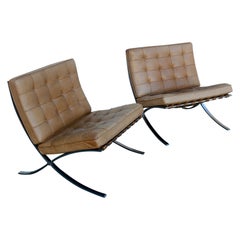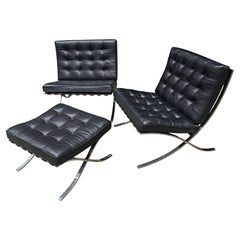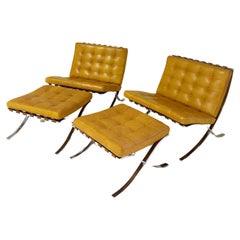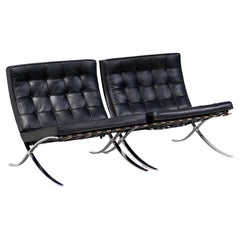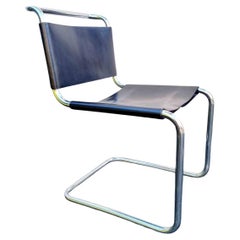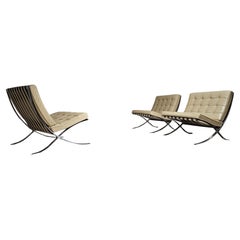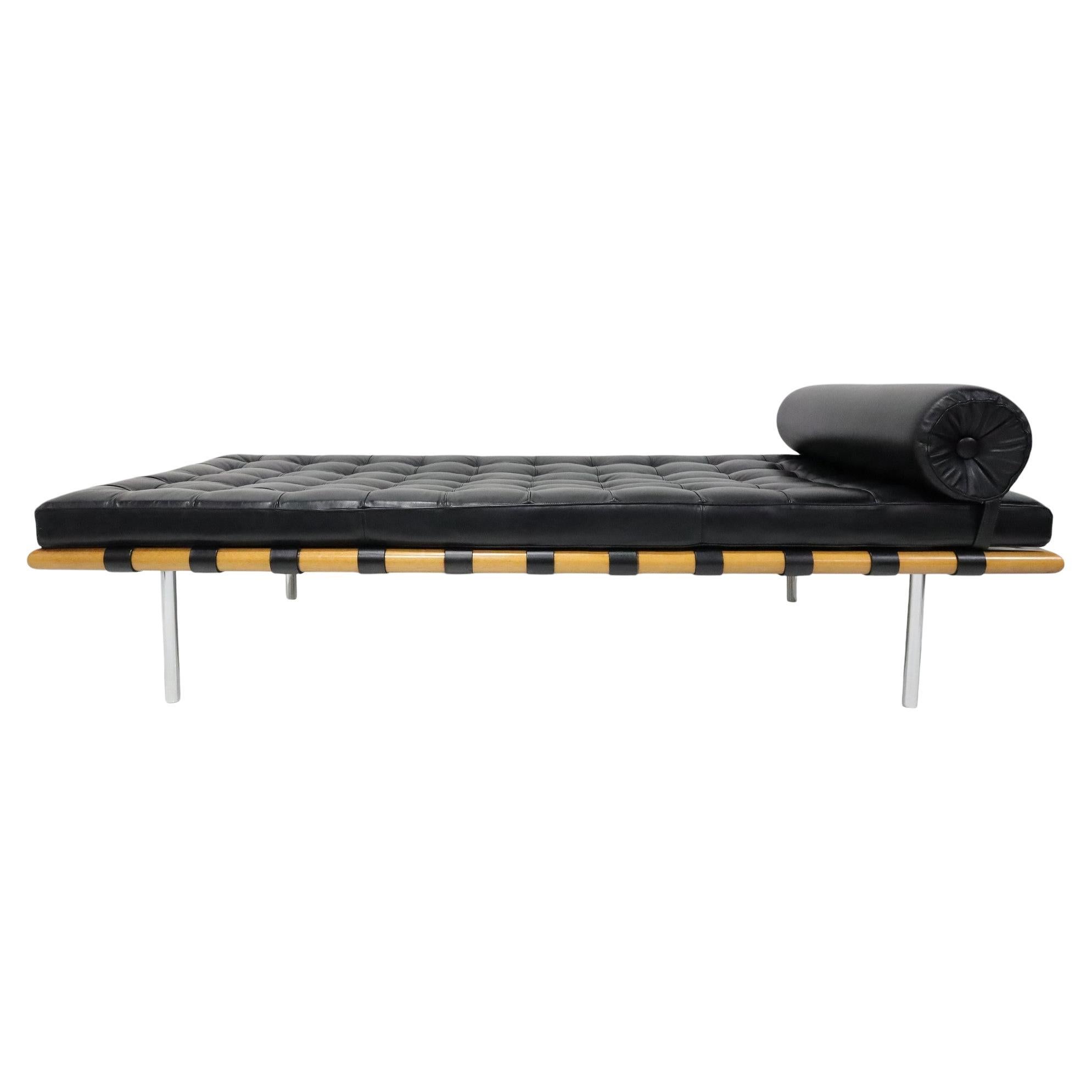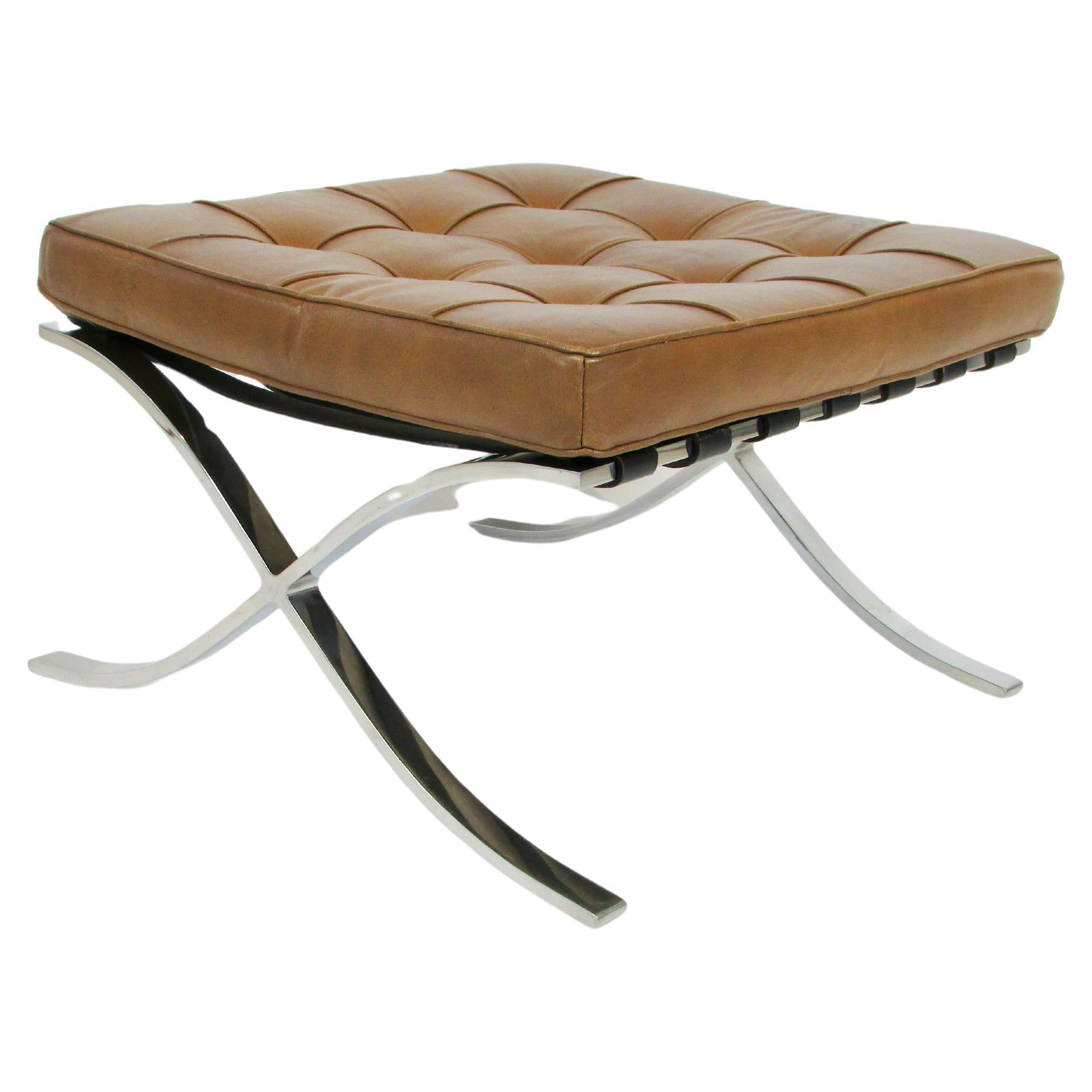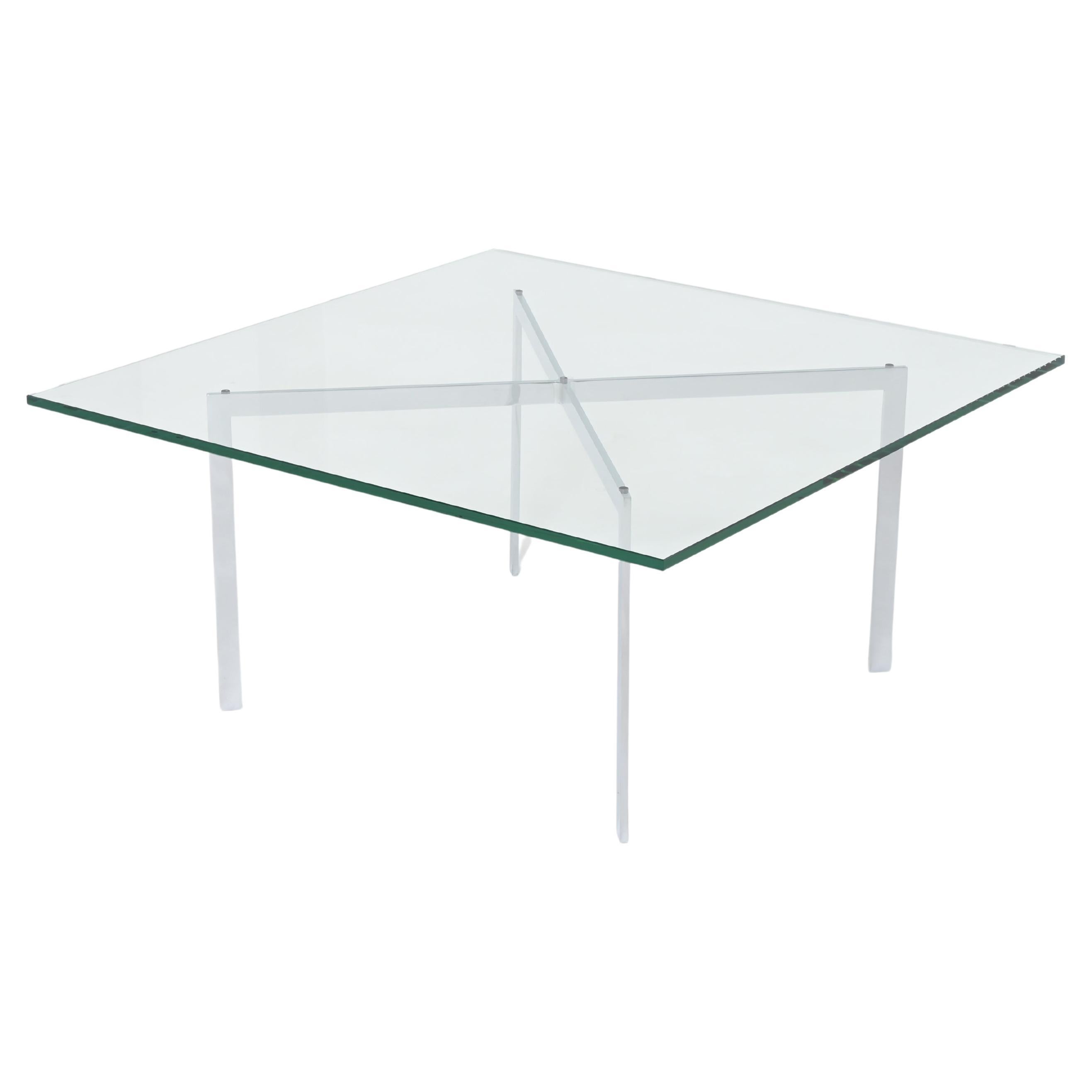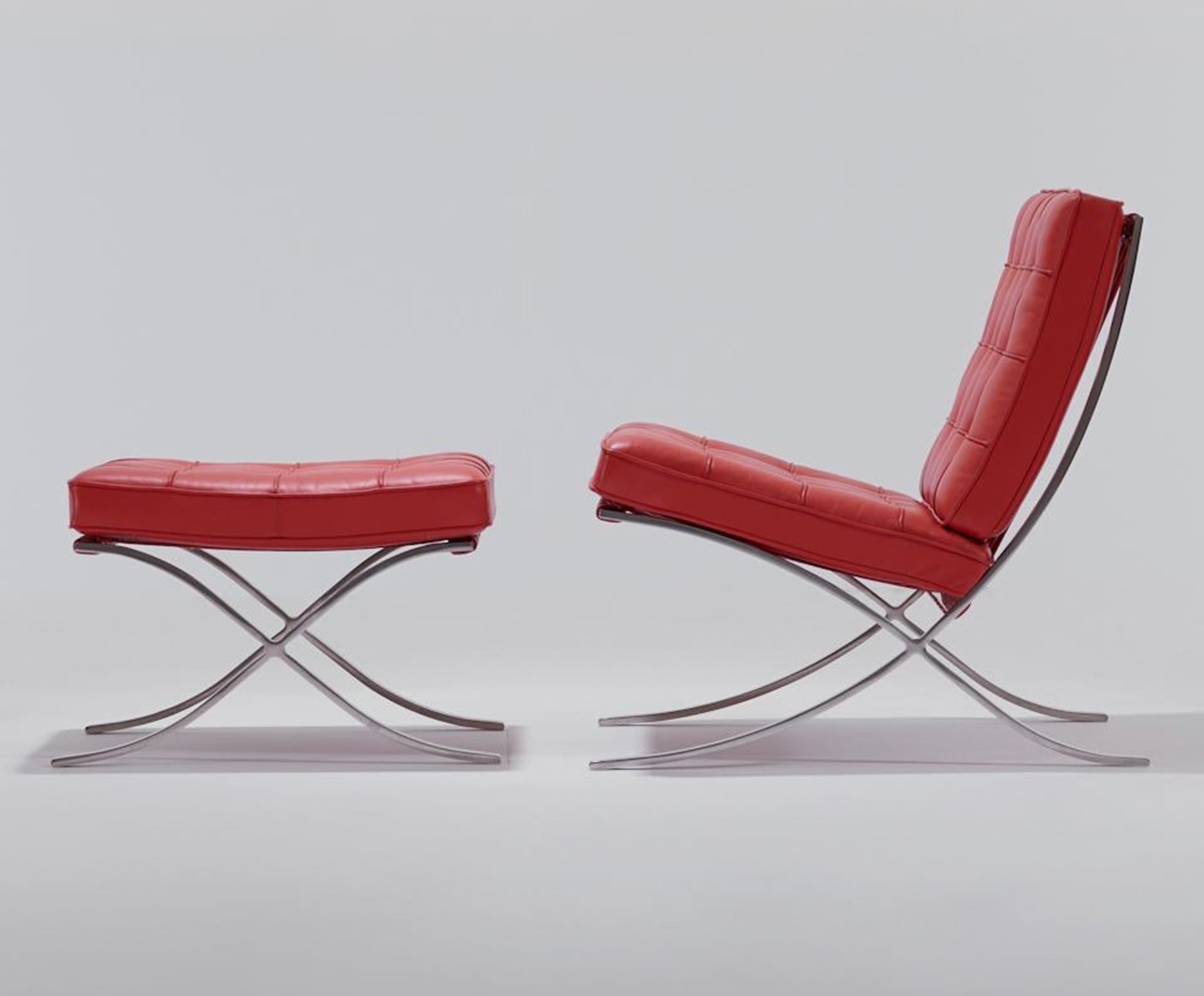
Barcelona ChairBy Ludwig Mies van der Rohe
For the German Pavilion at the 1929 International Exposition in Barcelona, German-American architect and furniture maker Ludwig Mies van der Rohe (1886–1969) — in collaboration with his romantic partner, designer Lilly Reich (1885–1947) — created a chair fit for royalty.
The Spanish king, Alfonso XIII, was expected to attend the opening of the World’s Fair, and as Mies later stated, the chair needed to be “monumental . . . you just couldn’t use a kitchen chair.” In its X-shaped structure, the Barcelona chair recalls the ancient folding stools of Egypt and Rome and was designed with swooping lines and a luxe contrast of materials between the chrome-plated frame and quilted leather cushions. Like the pavilion surrounding it, the chair distilled Mies’s “less is more” aphorism.
By all accounts, King Alfonso XIII never got around to sitting on this modern throne. The pavilion, too, stood for only seven months before it was demolished. Nevertheless, the Barcelona chair was regarded as a masterwork of modernism, influencing countless buildings that followed with its minimalist aesthetic of marble, glass and steel, which gracefully flowed together from the exterior to the interior spaces. Out of all the pavilion’s components, the Barcelona chair had the most longevity as a stand-alone piece.
Shortly after the close of the pavilion, the Barcelona chair went into production, first handcrafted by the Berliner Metallgewerbe studio. It became popular in private residences, debuting in America in 1930 in the New York apartment of architect Philip Johnson, who had met Mies during his work on the German Pavilion in Spain.
Fleeing the Nazis’ rise to power in Germany, Mies, too, soon moved to the United States. He relocated to Chicago, where he became the director of the Illinois Institute of Technology in 1938. It was there that he met designer Florence Knoll, who would help bring the Barcelona chair into mass production.
The earliest models of the Barcelona chair from Knoll were released in 1947. The design company and furniture manufacturer made slight updates to the chair over the years in response to new technology, including in 1964 changing the frame to stainless steel. Prevalent in office lobbies and architects’ homes, the Barcelona chair has seen numerous imitators, so in 2004 Knoll finally received a federal trade dress protection for it and four other pieces by Mies.
Knoll continues to produce the chair, and although the 21st-century version differs slightly from the 1929 original, it still embodies Mies and Reich's vision of design elegance in its balance of function and form.
Barcelona Chair
Vintage 1970s American International Style Lounge Chairs
Stainless Steel
Mid-20th Century American Mid-Century Modern Lounge Chairs
Stainless Steel
Vintage 1960s American Mid-Century Modern Lounge Chairs
Stainless Steel
Vintage 1970s American Mid-Century Modern Lounge Chairs
Steel, Chrome
Vintage 1920s Italian Bauhaus Chairs
Steel
Mid-20th Century European Mid-Century Modern Lounge Chairs
Leather
Mid-20th Century German Bauhaus Lounge Chairs
Steel
1990s Armchairs
Metal
Vintage 1970s American Mid-Century Modern Lounge Chairs
Metal
Late 20th Century American Mid-Century Modern Slipper Chairs
Leather
Mid-20th Century American Mid-Century Modern Armchairs
Steel
2010s Italian Modern Armchairs
Metal
Early 2000s American Bauhaus Lounge Chairs
Stainless Steel
Vintage 1970s American Mid-Century Modern Lounge Chairs
Steel, Chrome
Vintage 1960s American Mid-Century Modern Armchairs
Steel
Mid-20th Century American Mid-Century Modern Lounge Chairs
Metal
Vintage 1970s Italian Bauhaus Daybeds
Chrome
Vintage 1980s German Chairs
Stainless Steel
Vintage 1960s German Armchairs
Steel
Vintage 1950s German Bauhaus Lounge Chairs
Stainless Steel
Mid-20th Century American Bauhaus Lounge Chairs
Steel
Vintage 1970s Italian Bauhaus Daybeds
Chrome
Vintage 1970s American Bauhaus Lounge Chairs
Stainless Steel
1990s American Modern Lounge Chairs
Steel
Early 2000s American Bauhaus Lounge Chairs
Stainless Steel
1990s Mid-Century Modern Armchairs
Leather
Vintage 1960s German Bauhaus Chairs
Stainless Steel
Vintage 1950s German Bauhaus Lounge Chairs
Stainless Steel
Mid-20th Century Belgian Mid-Century Modern Lounge Chairs
Steel
20th Century Chairs
Steel
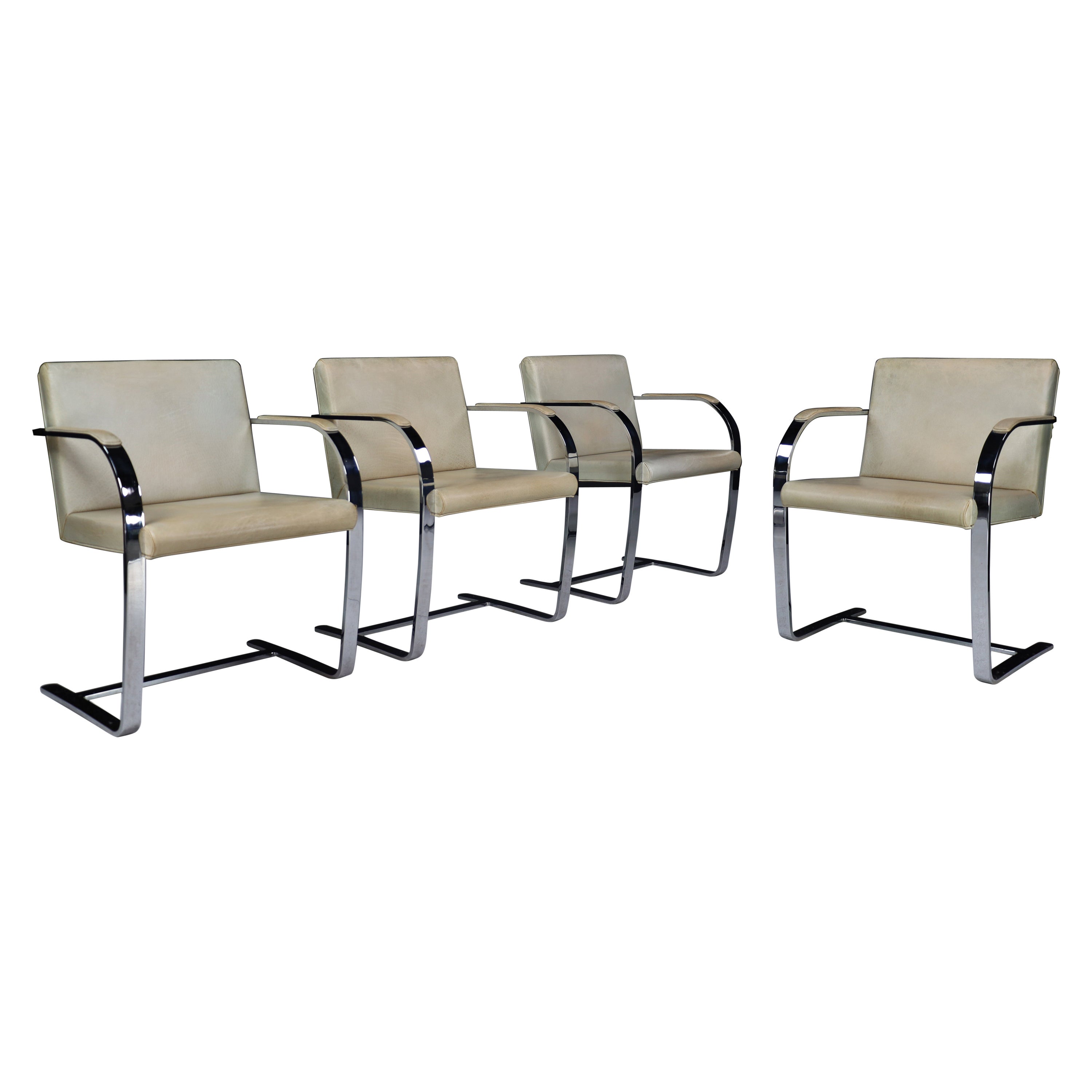
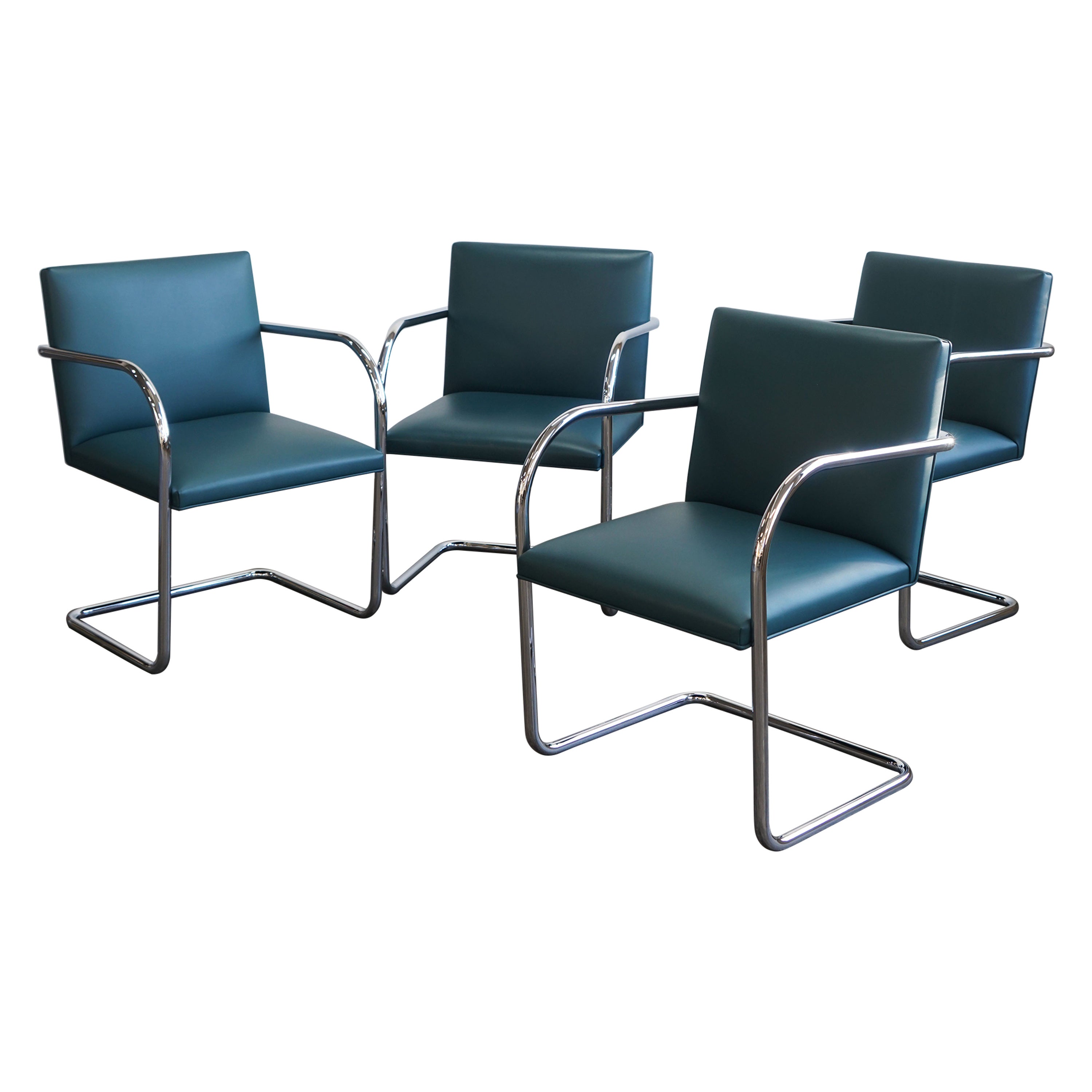
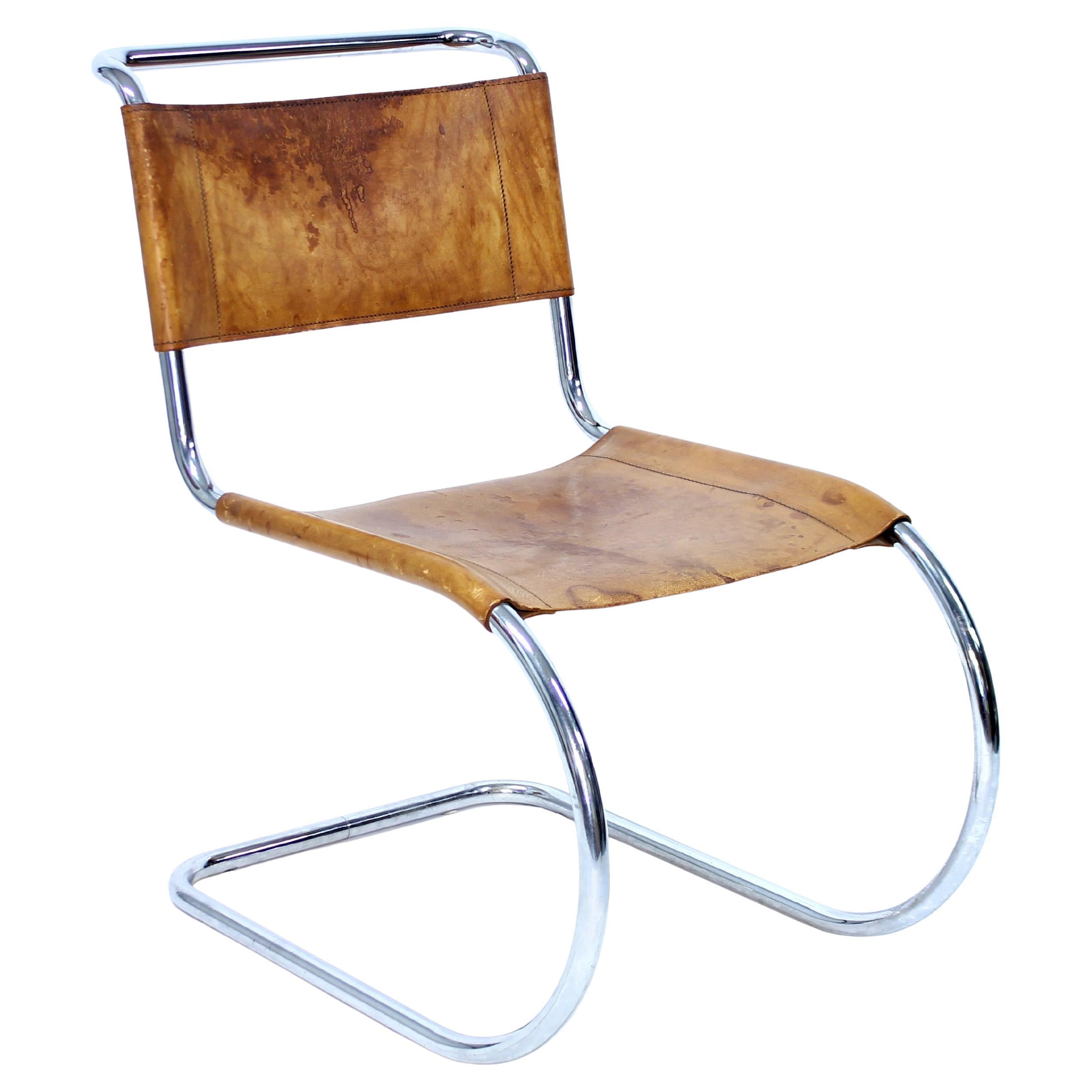
Read More
The 21 Most Popular Mid-Century Modern Chairs
You know the designs, now get the stories about how they came to be.
Mies van der Rohe’s Barcelona Chair Shook Modernism and Charmed Hollywood
The enduring appeal of the Barcelona chair is in the details.
A Short History of the World’s Most Iconic Designs
Of the million-plus items on 1stdibs, some seem to have transcended time, looking as fresh today as when they were first produced. The pieces highlighted on our new Iconic Designs page stand out for longevity, functionality and quality of design and manufacture — just the tonic for the present unsettled moment.
How Chicago, Mies van der Rohe’s Adopted Home, Remembers the Architect
The Windy City's Matthew Rachman Gallery takes a deep dive into the designer's practice.
